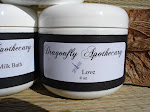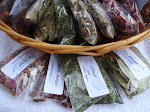A Meditation on Honey: Sweet Medicine of the Mind, Body and Spirit
A blog post by Stephanie Rose Bird
In this blog I am meditating on the various mind, body, and spiritual uses of honey. This is an excerpt from my book The Big Book of Soul: the Ultimate Guide to the African American Spirit: Legends & Lore, Music & Mysticism, and Recipes & Rituals.
Honey: Sweetness of the Goddess and the God
One of the most endearing images of honey in my memory was the unifying element in the novel The Secret Life of Bees, by Sue Monk Kidd. In this tale set in South Carolina, three sisters named May, June, and August take in a white girl named Lily and her housekeeper Rosaleen. Gradually, they allow the two newcomers into their spiritual world, which includes synchronized rituals with a circle of women, celebrating the Black Madonna and freedom from slavery using honey. They ceremoniously pour honey over the head of the Black Madonna who is chained. As the honey drizzles down the statue’s body, the chains loosen. The Black Madonna, like the black people, enjoys the sweetness of freedom.
In real life honey has a rich history in Africa. Honey use weaves through ancient Egyptian apothecaries, recipes, and ritual devotion. It was an important ingredient in Kyphi, unique Egyptian incense used to pay homage to the God Ra and Goddess Isis, which also contains dried fruit, red wine, and resins. Honey was used to mix a kohl solution to paint the eyes. It was also used cosmetically in hair and facial care.
Honey across Africa Today
West Africa: In Mali, soume is an alcoholic drink derived from honey. Soume is consumed from a calabash. Around the calabash and under the influence of soume, young people learn the secrets of their community. The elders gather around the soume-filled calabash to brag, remember and gossip.
East Africa: The Samburu people mix milk from their cattle with honey and pour it as a libation for spiritual blessings of the land. They use blood from the cattle and honey as a libation in a land cleansing rite. They have done this publicly in recent times as a gesture of peace with neighbors with whom there have been land disputes.
Southern Africa: The Bemba people of Zambia in Southern Africa enjoy grain and honey as an important part of their sustenance.
Honey in the Sacred Life of the Diaspora
Caribbean and the Americas: In the Black Atlantic, the honey Orisha is Oshun; in Brazil, Oxun; and in Cuba, Ochun. Oshun, as I like to call her, is invoked to bring healthy children, easy childbirth, love, sensuality, beauty, refinement, and sweetness. The people of Trinidad and Tobago Islands demonstrate how honey of Oshun is used in blessing, ritual, and ceremony.
• They prepare it with water, brandy, olive oil, and sugar and place it in a calabash as an offering to Oshun during some thanksgiving rites.
• Devotees consume an offering that includes duck, honey, olive oil, sugar, and brandy.
• A libation of honey, lavender, brandy, and olive oil is poured in honor of Oshun, also called Goddess of Water Powers and sometimes referred to as Saint Philomene.
• A honey dressing is rubbed on a bamboo pole to invoke the spirit of Oshun.
• A table is laid with honey, a calabash, candles, grains, and flowers to honor Oshun.
Honey is a rich part of story, history, song, dance, ritual, and economic opportunity for Africans and people of African descent. It is also a tasty way to sweeten teas and baked goods, allowing us to cut down on sugar consumption. Honey is sensual and it is useful in lovemaking rites as an edible body balm. It is also an excellent cosmetic, making an easy facial that controls oily skin, a soothing instant lip balm (just apply to cracked lips directly), a wound and burn healer and because it is antimicrobial and antiseptic it can be applied directly to cuts. There are so many things we can do with honey. It is a supreme mind, body, spirit healer, and as its uses in African diasporic healing demonstrates, it is one of nature’s great gifts to soulful wellness.
Teaching a workshop on magickal herbalism
Bio:
Stephanie Rose Bird, is the author of five books: The Big Book of Soul: the Ultimate Guide to the African American Spirit: Legends and Lore, Music and Mysticism and Recipes and Rituals, (2010, Hampton Road Publishers), A Healing Grove: African Tree Medicine, Remedies and Rituals ( 2009, Chicago Review Press), Light, Bright, Damn Near White: Biracial and Triracial Culture in America and Beyond (2009, Praeger Press/Greenwood Publishers) Sticks, Stones, Roots and Bones Hoodoo, Mojo and Conjuring with Herbs (June 2004, by Llewellyn Worldwide) and “Four Seasons of Mojo: An Herbal Guide to Natural Living (Llewellyn Worldwide, 2006). Bird has published numerous articles and columns including “Sage Woman,” www.naturallycurly.com, “Witchvox,” “PanGaia” and the “Oracle.” She is the mother of four, married to her soul mate and companion to four feisty animals. Bird is a practicing green witch, hoodoo, magickal herbalist and aromatherapist living and working in the Chicago area.
Where you can find her:
Twitter @StephanieRoseBi
Website
Authors Den
Want to learn more and see where will she be next?
Pump Up your Book
Amazon.com links can be found on her website to purchase her books
(This blog is posted today in memory and honor of Stephanie’s mother)













I love this girl...too bad she's leaving after the end of the month but I would love to hear more about her herbalistic talents. Thanks for posting her guest post today!
ReplyDeleteThanks so much Dorothy and stay tuned for more!
ReplyDelete